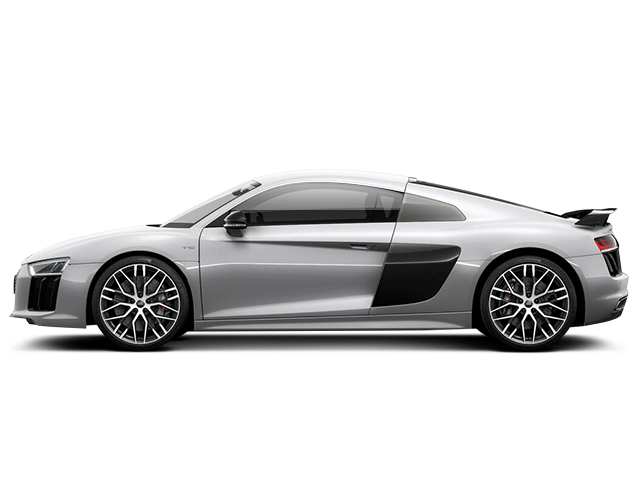Reno, NV – In the recent movie The Founder, which documents how milkshake-maker salesman Ray Kroc became the CEO of the most successful fast-food chain ever, there’s a clever scene showing how the original McDonald’s owners – Dick and Mac McDonald – developed their ultra-efficient kitchen. It all started by using an empty tennis court to draw a life-size floorplan of said kitchen, and actually having employees move about the schematic as if they were working. At the outset, the number-one element that made McDonald’s so successful was the packaging of their kitchen.
As I watched this, it reminded me – because I’m a crazy car person – of Porsche, and how they’ve managed to develop such a tight package with the 911. Way back in the 1960s, the model was conceived from a blueprint – rear engine, rear drive – that shouldn’t have worked. Not in a world where physics matter. The company’s designers did it anyway, and it was so good that they continue to do it to this day. Why? Because they thought about the packaging, they knew the strengths of their platform (for a start, how the engine’s weight over the rear-drive wheels meant inherently better traction) and they’ve continued to refine, refine, refine the product to this day. Of course, they’ve added trickery like AWD, traction control, active engine mounts and so on, but the idea is essentially the same as it was way back in 1964.
Which brings us to the car here: the 2017 911 GTS. Available in Coupe (from $137,800), Cabriolet ($151,900) and Targa 4 ($159,700) body styles, it’s the latest incarnation of the 911, now in its 991.2 generation. It represents the latest evolution of this tried, tested and true platform and, my oh my, is it ever good!
Well worth the wait
In Porsche’s world, the GTS name didn’t start on the sexy rear deck of a 911. It was born, in fact, as a model designation for the mid-engined 904 GTS racer, a model that actually started racing in the U.S. before doing so on its home continent of Europe. The next time we saw the “GTS” letters, they were again affixed to a slightly unorthodox (for Porsche) car: the front-engined 928. In the modern era – that is to say on a car that Porsche still builds today – the 911 was once gain beaten to the GTS punch by the Cayenne SUV. It wasn’t until 2010, with the 997.2 generation, that the GTS name finally made it to the rump of a 911 model.
“The GTS effectively bridges the gap between the 911 Carrera S and the Turbo and GT3 models,” said David Burkhalter, product communications manager at Porsche. The manufacturer was finding that enough Carrera S buyers were optioning up their cars in such a way that it highlighted the necessity of creating a whole new 911 model. Added Burkhalter, “It was an opportunity for us to say to our customers ‘hey, if you guys are already optioning your 911 S this way, how about this?’”
“This” signifies quite a few things. For starters, all GTS models sport racier satin-black centre-lock alloy wheels (more traditional five-lug alloys are an option), ride lower than the Carrera and Carrera S, and get smoked headlights and taillights, black-painted front splitter, Sport Design mirrors, exhaust outlets and, if you select the Targa model, a black-painted “Targa bar” treatment. Furthermore, every GTS gets the wider body reserved for AWD models in the Porsche lineup. It looks purposeful, that’s for sure, but that’s the point. Those centre-lock wheels? No lighter than a traditional five-lug option, and they don’t affect performance whatsoever. They’re there just because they have a motorsport connection, and they had another layer of some good ol’ motorsport je ne sais quoi to the GTS.
Interior fit for a racer
Less subtle is the interior, which gets all manner of racy additions. Alcantara suede is draped over pretty much every surface, from the door panels to the shift knob, the steering wheel and the seats. No question about it, this is a 911 that’s focused on performance above all. Other additions include a smaller steering wheel, Sport seats and “GTS” badging on the headrests and kickplates. You can switch the Alcantara for traditional leather, but why would you want to? You’ve bought a GT3-lite; don’t you want the raciest interior possible?
At any rate, with all that suedery and raciness, we were happy to find that the key elements of the 911 experience remain: perfect seating position, room enough inside to be used as a daily driver, and that great three-gauge instrument cluster, made all the more eye-catching by the red-painted tach, a GTS exclusive.
Addictive performance
A daily driver it may be, but with a name like “GTS”, it has to perform, on both your favorite mountain road and the race track.
To that end, power has increased over the previous GTS model, from 325 to 405 lb-ft of torque, and from 430 to 450 horsepower, over the last car’s naturally-aspirated 3.8L flat-6. You can thank the addition of two turbochargers for the increase, which also allowed the engine to shrink to 3.0L. All cars, meanwhile, are available with either a 7-speed manual gearbox or 7-speed PDK dual-clutch automatic.
We started our day at the helm of a PDK-equipped RWD Coupe. If it looks a little more aggressive than the other models it’s because it rides an additional 10 mm lower than the Cabrio and Targa body styles. Those two models exhibit more chassis flex than does the coupe, and a higher ride height gives the body more room to work with and reduces squeaks and rattles.
Like all turbocharged engines, you will find a bit of a delay in power delivery from tip-in, but once enough exhaust gasses are built up and those turbos start to spool, watch OUT. You will be sent down that gorgeous, twisting mountain road at a torrid pace, especially if you’ve activated launch control by first selecting the Sport + drive mode with a turn of the dial mounted on the wheel (which has no other buttons, making for a simple, refreshing design), holding the brake, and mashing the throttle from stop. At that point, it may as well be a space launch. What motive force there is! And that’s in the rear-wheel drive version!
Flip the right paddle and bang! Second gear. Bang! Third gear. Bang! Fourth gear, at which point you have to back off because you’re well into the stratosphere speed-wise. Just a constant whir of power as the turbos spool, spool, spool and jam as much air into the combustion chamber as possible. It’s an addictive feeling, pedalling this GTS, and I challenge anyone not to take an extra run on their favorite road just to feel the rush all over again.
That’s all before we’ve even talked about the handling package, which is second to very few – perhaps none – in this segment. The steering may be electronically boosted, but the feel through that fantastic Alcantara wheel is a good one, nicely un-artificial. The wheel’s radius is small, but since the steering is 10% more direct than a Carrera S, it’s actually perfect because most curves barely require a quarter-turn to complete. It just adds to the car responding so very quickly to even the slightest of steering inputs. Yet, somehow, it doesn’t feel nervous when you’re on the freeway, either.
Completing the handling package is the standard fitment of two-mode electronic dampers, optional rear-wheel steering as well as active engine mounts. Like the dampers, the engine mounts are hydraulically fastened to the chassis, so the engine’s mass can actually be used to help get the car moving in the direction you want it to. Then, at rest and slower speeds, metallic particles within the damper fluid can neutralize powertrain vibration, making for a more comfortable ride, and one that takes less of a toll on the car.
For me, though, the afternoon switch to the AWD Targa model equipped with the 7-speed manual was the main event. I know, I know; the GTS is the racier 911 and so you should have all the racy bits – bits that include a faster transmission and, well, a roof. Having said that, being a Targa model, it still kind of does have a roof in that it has solid c-pillars as opposed to folding ones like you’d see on the Cabrio. So I guess I’m meeting the naysayers halfway.
I’m just such a fan of the Targa because it’s the best of both worlds; you get refreshing top-down motoring without the tiring wind buffeting you get in most convertibles. Activating the Targa roof, meanwhile, is spectacular to behold and the car looks like a proper coupe when the top’s up. My one complaint? Being the GTS model, black Targa bars are your only choice; to me, they leave a slightly unfinished look. I’d take the silver bars available on the Targa 4 and Targa 4S models any day.
It was at the helm of the Jet Black Targa, by the way, that I had the realization of just how good the GTS is. I was trailing a fellow journalist – who happened to be driving the Coupe I’d had in the morning – through a string of mountain switchbacks heading into the Biggest Little City in the World, Reno. The road was glass-smooth, and there was the white GTS, wide rump bobbing and weaving through the bends ahead of me – and he wasn’t getting any further. I was focused on him, because the rest of the GTS experience is such a fluid one that it occurs naturally through your fingertips, your toes and your rump, letting you better focus on the road ahead. Every control seems to happen before you even consider it; a perfect rev-matched downshift followed by an application of just the right amount of steering lock occurs before you’ve even considered the inputs, so telepathic is this car. Add the AWD powertrain, and the power out of corners is such that any gap built up by the RWD model ahead of you is quickly dissipated as engine, transmission and drive wheels all work together in perfect unison to reel it in. Yes, much of this was thanks to the spectacular roads we were on, but most of it has to be attributed to this wonder of a performance automobile, the latest climax of over 50 years of development.
Deal of the Decade?
What’s surprising about the 2017 Porsche 911 GTS, however, is the value proposition it presents. Yes, I said it: even with a base MSRP of over $135,000, the GTS is a remarkably good deal.
If you want to do what Carrera S buyers have been doing and spec your car similarly to the GTS, you’re looking at a cost of entry of over $144,000. Even if you do spec it as such, you don’t get the cool centre-lock wheels, more-aggressive front fascia, sportier suspension or Alcantara trim inside.
All that aside, the bottom line is the GTS is a fantastic drive, it looks spectacular and I came away from the event thinking that this very well could be the best sports car available today. Especially for the price, when you consider that its competitors, including the likes of the Audi R8 and McLaren 570S, will cost you heaps more.
All from a 50-year-old blueprint.







